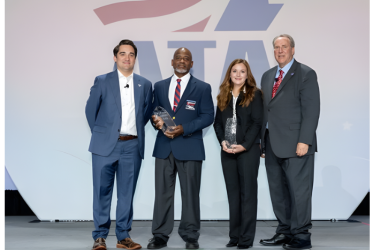Speed limit regulations across various states are undergoing legislative scrutiny, from Maryland to Michigan and beyond.
In Maryland, Delegate Mary Lehman’s sponsored bill, HB193, is progressing towards approval, aiming to empower Anne Arundel County and its municipalities to lower speed limits to 15 mph on specific roads following an engineering and traffic assessment. This move is driven by concerns over pedestrian safety, particularly poignant in Anne Arundel County.
“The faster cars travel, the greater the chance there is for fatal injuries to pedestrians, bicyclists, passengers and drivers,” Lehman said.
Meanwhile, Michigan legislators, led by Representative Bradley Slagh, have acted to address shortcomings in speed limits. A bill, HB4012, recently signed into law by Governor Gretchen Whitmer, allows for greater flexibility in setting speed limits based on the 85th-percentile speed rule. This change aims to enhance safety while also streamlining the process of modifying speed limits, aligning more closely with official traffic engineering standards.
In Missouri, two proposed bills, HB1802 and SB1298, seek to adjust speed limit regulations, particularly on county roads and specialized vehicle transport. Representative Ron Copeland’s bill targets reducing speed limits on certain county roads, emphasizing safety and cost-effectiveness.
“Forty is still a little excessive, but it’s a lot better than 50,” Copeland said.
Senator Jason Bean’s bill aims to elevate speed limits for cotton trailers, addressing industry needs and efficiency concerns.
New Hampshire’s legislative agenda includes HB1550, which would authorize municipalities to establish seasonal speed limits, reflecting local traffic patterns and safety considerations. Sponsored by bipartisan representatives, this bill highlights regional support for tailored speed regulations in accordance with increased tourism in certain months.
In New Jersey, Senator Declan O’Scanlon’s proposal, S1652, advocates for employing the 85th-percentile speed limit formula, similar to the proposed bills in Michigan, to set speed limits on key highways, promoting data-driven decision-making over political discretion.
In New York, various bills propose adjustments to speed limits across different contexts. Senator Tom O’Mara’s bill, S2209, seeks to raise speed limits on certain highways to align with neighboring states.
“The majority of states across the country have state speed limits that exceed 65 mph,” O’Mara wrote. “New York has failed to keep up with the rest of the country by not adopting a more efficient speed limit. … This bill would correct this inefficacy by allowing for a 70 mph speed limit where appropriate.”
Also in New York, Governor Kathy Hochul’s budget proposal includes provisions for lowering speed limits in New York City to enhance pedestrian safety.
In North Carolina, House Bill H386 proposes increasing the speed limit to 75 mph on designated highways, reflecting evolving traffic patterns and road design capabilities.
Lastly, in South Carolina, House Bill H3364 aims to raise minimum speed limits along interstates, aiming to improve traffic flow and safety on the state’s fastest highways.
Source: Land Line











